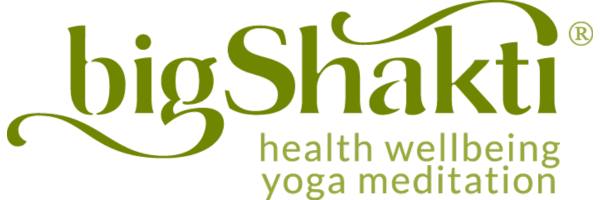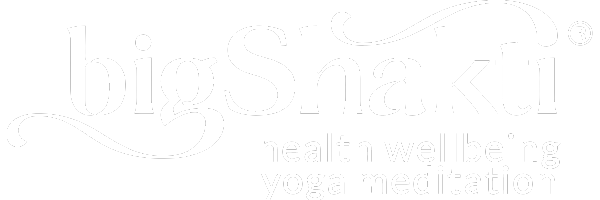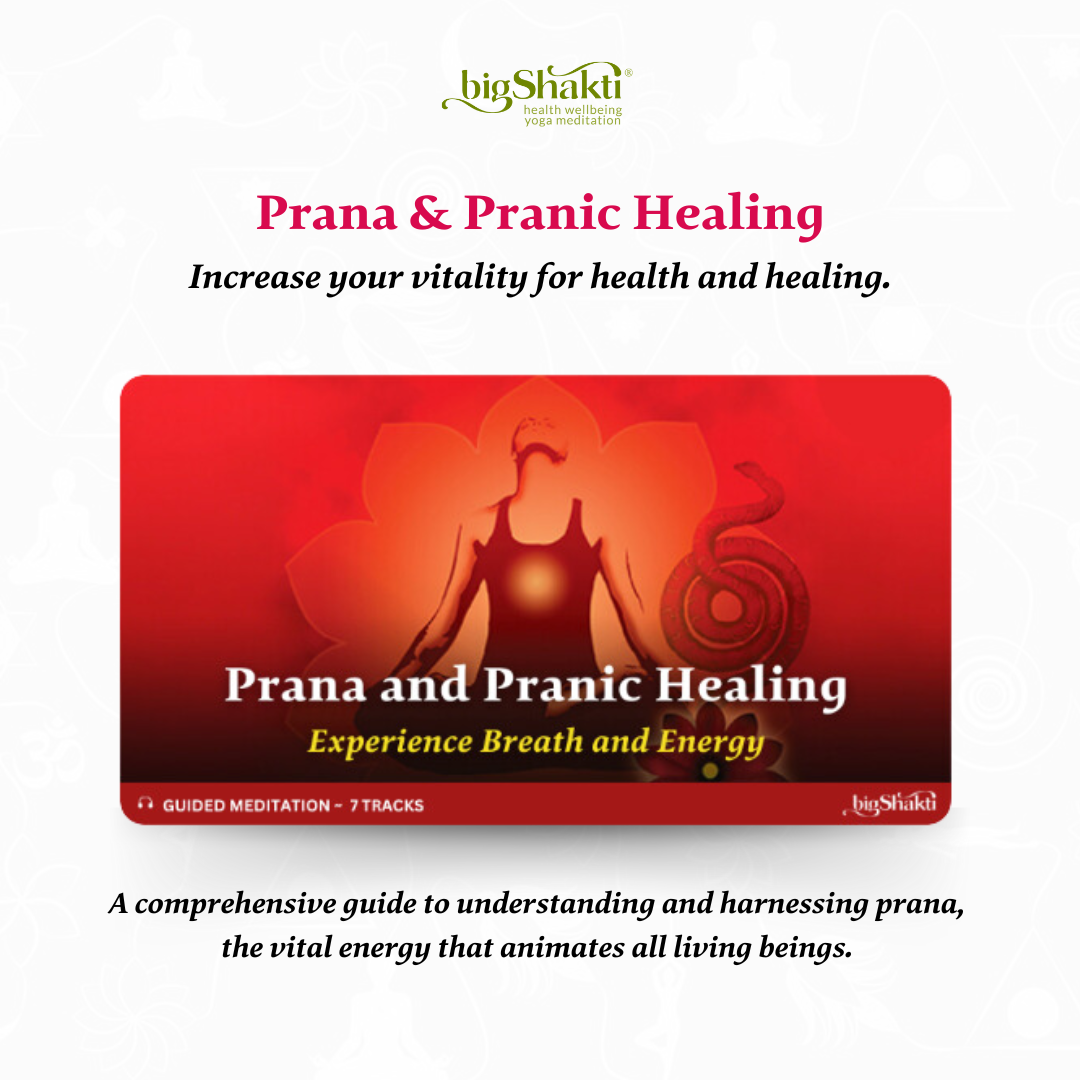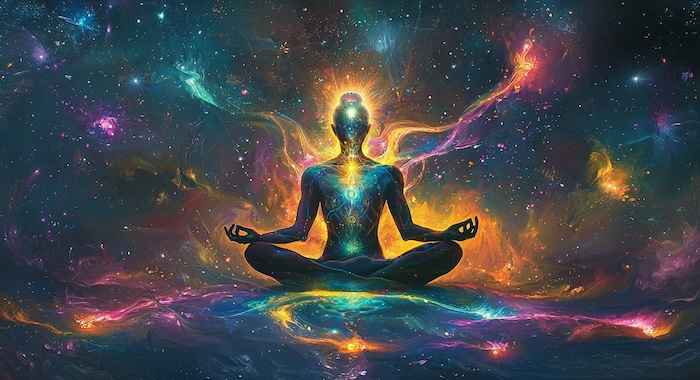Yoga of Mental Health Workshops → More Info
Prana and Pranic Healing - Master Your Life Force - Prana
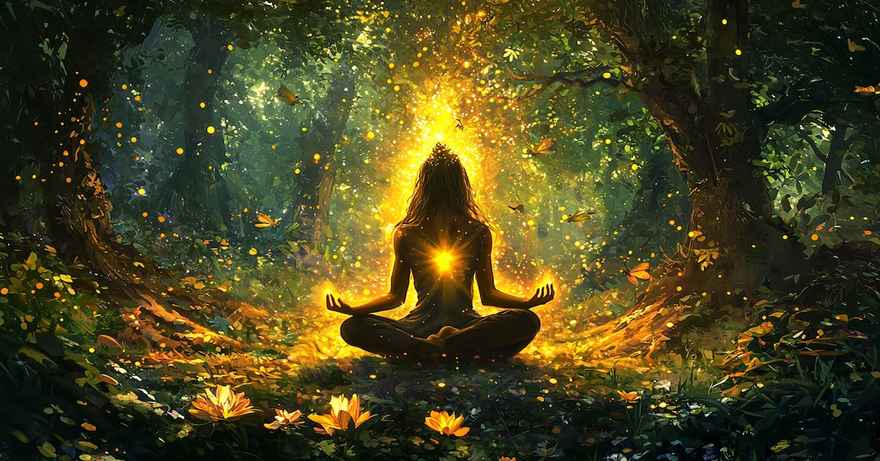
Prana is the energy that is at the basis of all creation. Everything that exists, animate and inanimate, is a manifestation of prana in one form or another. At the macrocosmic level, prana is called Maha Shakti, which means ‘great power.’ Maha means great, and Shakti means power, energy, and force.
In Indian philosophy, Shakti is divine feminine energy, the dynamic, creative force that creates and sustains the universe. Shakti is the active principle of energy that animates all of existence. She is the force that underlies all creation, movement, and change in the universe. She is the counterpart to Shiva, who is pure consciousness, the static, unchanging aspect of reality.
Within the microcosm of living beings, Maha Shakti manifests as prana shakti. Whereas Maha Shakti is responsible for all creation, animate and inanimate, prana shakti is the source of all sentient life.
By studying and meditating on prana, you learn how to master your life force. you will increase both your life span and health span.
You can learn how to do this using our Prana and Pranic Healing Meditation Program
Prana and Pranic Healing is part of the Life Force Meditation Bundle, which combines several Big Shakti meditation programs that cultivate health, vitality, longevity, and overall wellbeing.
What is Prana
Prana is the life force or vital energy that animates all living beings, your inner power and strength. It powers growth, change, and your ability to engage with life. Prana is present in the air we breathe, the food we eat, and the environment around us. It sustains our physical, mental, and spiritual health.
Prana empowers both the gross physical and the subtle dimensions of your being. For example, prana powers your intelligence and intuition.
Definition - Prana is a Sanskrit word derived from the root an, meaning breathing and to sound, and pra, meaning before, forward, in front of, and forth. Therefore, the word prana, which is defined as breathing in, inhaling, the breath of life or spirit, implies that it is the vital energy that sits before inhalation.
Prana is the energy required for us to inhale, which is the first thing we do when we enter this world, separate from our mother's umbilical cord, and begin to breathe on our own. It is the energy we will require to remain strong and healthy for the rest of our lives.
The word prana can also be translated as breath. At the subtlest and most refined level, it is the energy that powers your spiritual essence.
The term prana, therefore, has multiple meanings depending on the context.
For example, Maha Prāna is macrocosmic prana, prana shakti is microcosmic, and prana vayu is the term used to describe a sub-prana (which will be explained in more detail in part 2 of this article), which lies in the chest.
The fact that each of these areas shares the name prana points to the fact that it is via the chest, the heart, and the lungs that we can connect our individual prāna and consciousness heart to cosmic prāna and consciousness. The Yoga Chūdāmani Upanishad (v. 90) states:
"As long as prana is retained in the body, the individual soul does not leave the body. The departure of prana from the body is death. Therefore, prana should be controlled.’
This is why yogis practice pranayama and prana yoga: to control and stabilize prana, improve health, and increase longevity.
All life pulsates
Prana, when healthy, constantly flows and pulsates, contracts and relaxes.
For example, the beat of your heart and the rhythmic inflation and deflation of your lungs.
When the body or a part of the body is full of healthy, balanced prana, you feel good. You feel that life is flowing smoothly within you. There is a sense of strength, warmth, and being nourished. Prana is the basis of this warm, glowing feeling.
Excessive tension and contraction and an inability to relax, whether muscular, mental, or emotional, cause prana to become imbalanced.
Over-stimulated or undercharged prana stops pulsating in certain parts of the body.
Under stress and tension, your breath may become erratic or even stop altogether for moments, negatively impacting every part of your body. Your heart rate might increase to an uncomfortable level, and in more extremethe heart's rhythm circumstances, can become damaged, causing an arrhythmia.
Diarrhoea is an example of excessive prana, while constipation occurs when prana is diminished. Disturbance in the smooth flow of prana causes blockages and stagnation, allowing toxic substances to build up in the body.
When flow and pulsation are disturbed, prana cannot nourish and strengthen you. Rather, dysfunction and disease follow.
Big Shakti has created a guided yoga and meditation training program called Prana and Pranic Healing that enables you to rebalance your prana and amplify your vitality for a vibrant, joyful life.
Vata
At the microcosmic level, prana is a very complex phenomenon. Its nature is subtle, constantly moving, and highly changeable.
In Chinese medicine, prana is called Qi or Chi and is described as a vapor that can suddenly appear and then disappear and then undergo major alterations in the next moment.
Prana manifests in the body as vata dosha, which means wind or the wanderer. Vata is a term used in Ayurveda, Indian traditional medicine. It is a manifestation of prana when it is acting under the influence of the space and air elements in the subtle body.
Like air, wind, and space, vata has the characteristics of being cold, dry, subtle, rough, and erratic.
Vata controls all movements and changes in the body and mind.
It is easy to lose prana and aggravate vata if you do not look after yourself, especially in a busy modern life.
Vata increases and becomes excessive and deranged when you are holding a lot of stress, having to cope with too many demands, dealing with unexpected changes, or working too hard. This is exacerbated by a poor diet and an erratic lifestyle. Deranged vata makes you feel exhausted, dry, shaky, ungrounded, and anxious. Sleep issues and memory disturbances are common symptoms of deranged vata, as are general feelings of weakness and insecurity.
Prana and vata have an intimate relationship. By strengthening prana, you pacify vata and prevent illness from forming in the body and mind. By pacifying vata with various lifestyle modifications or yoga-meditation practices and sometimes herbs, you increase prana.
Yoga provides us with the means to improve the flow and pulsation of prana and the function of vata in your body and mind because strong, healthy, flowing prana is required to power your journey to higher consciousness.
Your Pranic Bank Account
Each one of us is given a prana bank account at birth. You can squander your inheritance over your lifetime, or you can build on it. If you squander it, you degenerate at an early age. If you build on it, you become more vital as you age and are better able to use the collective experiences of your life for a good purpose.
Prana is a precious gift that can be consciously grown or carelessly depleted.
To remain healthy in your old age, you need to learn about your prana, what it is, how to manage it, how to use it properly, and how to create more when you need it. You need to maintain balance for true health and strength.
It is so easy for the body and mind to be disturbed and for you to waste prana if you are not careful, especially during stressful or difficult times. If your pranic bank account is in the red, your prana is low or imbalanced. You become prone to illness. You will be unable to use your body, mind, and intellect to their full capacity.
When your pranic bank account is growing because you are living a balanced life, resting well, and saving energy, you feel strong, powerful and creative, balanced, and in tune with nature. You are able to power up all your physical and mental organs so that they function at an optimal level.
Prana is the life force, and life feeds on life. The main function of prana is to maintain itself, to keep you alive. To generate prana in your body you need to extract energy from the world, for example in the form of food, water, and oxygen, and use this energy to generate more energy within you.
To reach your greater pranic potential, you need to fill yourself with the best quality of fuel at all levels of your being, physical, mental, emotional, and spiritual. You produce physical energy in mitochondria, little powerhouses that exist within the cells of the body. Healthy mitochondria are the physical basis of prana in your body. You have approximately 37 trillion cells in your body and approximately 1,000 mitochondria in each cell – a lot!
All activity (all karma) uses prana. This includes movement, speech, thought, and emotion.
Healthy forms of exercise both use and generate more prana by stimulating the growth of mitochondria in your muscles.
Certain activities use excessive amounts of prana, for example, worry or emotional distress, leaving you feeling depleted and exhausted, while poor diet and lifestyle can damage prana. Whereas negative emotions and depression deplete prana, loving experiences create prana.
You take in energy in the form of food and liquids and from the air, you breathe. The more alive a substance is, that is, the more prāna it has, the more life force you can extract from that substance.
The generation of prana also occurs through stillness and deep rest. Deep restful sleep and meditation are the two best ways of generating prana. Though sleep is designed to restore energy, it is not always efficient, especially if you go to bed exhausted or full of worry and tension. This is why relaxation and meditation practices are the more efficient form of rest, allowing you to calm the mind and emotions and to replenish yourself with energy deeply. You can actually use meditation to tune into and access your prana at a very deep level of being.
Generate, Store, and Utilize Prana
Yoga and meditation enable you to delve into the mystery of the life force via an exploration of the relationship between the breath and prana. You do this by utilizing physical postures, breathing techniques, and specific mental visualizations. These techniques provide a profound and systematic approach to sensing what prāna feels like, how to generate and store it, and how you use it to your best advantage.
Yoga and meditation enable an authentic experience of prana.
You discover what a lack of prana feels like and can feel where it is flowing and where it is blocked. You can then liberate the energy blocked and trapped within tensions, contractions, and negative patterns, thereby reducing the degenerative effects of aging and supporting healthy flow. You can actually influence the smooth flow of prana using techniques such as ujjayi pranayama and throat breathing, which are taught in several of Big Shakti’s meditation training programs. As you develop pranic awareness, you are tuned into and become more sensitive to your body’s needs. You intuitively sense what makes you strong and healthy and what makes you weak and sick.
The Breath and Prana
The key to understanding prana and controlling it lies in the breath. There are two levels of breath: the gross breath and the subtle prānic breath, which is the prāna itself.
1. The gross breath which takes oxygen into the body and removes waste gases.
It has three phases:
- inhalation,
- exhalation, and
- the pause or space between the breaths.
Inhalation and exhalation have completely different characteristics.
Inhalation is an active process. Energy is required to contract the breathing muscles, the diaphragm, and the ribs, in order to pull air into the lungs.
Normal relaxed exhalation is passive; no muscular contraction is required.
Exhalation can be made more forceful by muscular contraction, for example, in coughing and sneezing. Both inhalation and exhalation can also be slowed through conscious muscular control.
2. The subtle pranic breath can only be understood by experience.
The gross breath and prana move in opposite directions. As you inhale, the gross breath takes air down into the lungs, at the same time, when you are tuned into your prana, you can feel your prana move upwards. When you exhale, air moves up inside the body before it’s expelled from the body, and at the same time, you can feel that prana moves downwards.
The MP3 series Prana and Pranic Healing is systematic training in sensing and utilizing prana. This series of meditations on prana teaches you how to experience these two levels of the breath and use them for health and well-being.
The meditation technique Ajapa Japa also utilizes these two breaths to integrate body, mind, and spirit.
The Pranic Body
The next step on the path to cultivating and refining your perception of and ability to utilize prana is to become aware of the pranic sheath, called the pranamaya kosha.
A kosha is a term used in Yoga Philosophy to describe the five sheaths (layers) of existence, from the gross physical sheath to the energy (pranic), mental, psychic, and spiritual sheaths.
The pranamaya kosha is comprised of 5 divisions of prana, called sub-pranas or vayus. It also consists of the channels that distribute prana in the body.
Each sub-prana is ruled by one of the five elements, earth, water, fire, air, and space, and governs the growth and function of certain areas of the body.
For example, prana combined with the earth element is called apana vayu (or just apana) and governs the pelvis and excretion as well as certain psychic functions such as a feeling of being secure.
Prana combined with water is called samana vayu and governs digestion, with fire, prana vayu (a subset of prana shakti), which governs the heart and lungs, with air udana vayu which controls the head, and with space vyana vayu, which coordinates the other sub-pranas (vayus).
Pranayama, yoga breathing techniques, enable you to control the pranic sheath, either an individual sub-prana or the whole system.
The most useful method of balancing prana is ujjayi pranayama, throat breathing, which is the foundation of Pranic and Pranic Healing, and Ajapa Japa techniques mentioned above.
What is Pranic Healing
Pranic Healing is a holistic healing modality that utilizes prana, or life energy, to heal physical and emotional imbalances in the body. This method involves the manipulation of the body's energy field to promote overall health and well-being. Pranic Healing is based on the principle that the body has an innate ability to heal itself, and by using prana, this self-healing process can be accelerated.
The system of Pranic Healing taught by Big Shakti is for self-healing. Certain schools teach students how to use prana to heal other people.
How Pranic Healing Works
Pranic Healing works by cleansing and energizing the energy centers, known as chakras, and the energy pathways, called meridians, in the body. These energy structures are responsible for the flow of prana, which sustains the health of the body's organs and tissues. By removing blockages and enhancing the flow of prana, Pranic Healing helps to restore balance and harmony within the body.
The Process of Pranic Healing
- Scanning: The healer scans their energy field to detect any imbalances or blockages.
- Cleansing: The healer employs pranic meditations to remove harmful or stagnant energy from the affected areas.
- Energizing: The healer channels fresh prana into the cleansed areas to revitalize and support the healing process.
- Stabilizing: The healer ensures the new prana is stable and well-integrated into the body's energy system.
- Releasing: The healer disconnects from the energy field.
Common Questions About Prana and Pranic Healing
How Does Prana Affect Health?
Prana influences the body’s physical health by ensuring that all organs and tissues receive the energy they need to function properly. When prana flows freely and is balanced, the body is healthy and vibrant. Imbalances or blockages in the flow of prana can lead to physical and emotional ailments.
What Can Pranic Healing Treat?
Pranic Healing can address a wide range of physical, emotional, and psychological conditions. It is effective in relieving stress, anxiety, and depression, as well as in treating physical ailments such as chronic pain, digestive issues, and respiratory problems.
What are Chakras and Their Role in Pranic Healing?
Chakras are energy centers in the body that regulate the flow of prana. Each chakra corresponds to specific physical, emotional, and spiritual functions. In Pranic Healing, chakras are cleansed and energized to ensure a balanced flow of prana, which supports overall health and well-being.
What is the Difference Between Pranic Healing and Other Healing Modalities?
Pranic Healing is unique because it does not require physical touch. Instead, it involves manipulating the body's energy field. Unlike other healing methods that may focus solely on physical symptoms, pranic healing addresses the energetic imbalances that underlie physical and emotional issues, promoting holistic healing.
Can Anyone Learn Pranic Healing?
Yes, Pranic Healing can be learned by anyone with a sincere interest in healing and energy work. There are structured courses and training programs available that teach the principles and techniques of Pranic Healing. These courses provide the knowledge and skills needed to effectively use prana for healing purposes.
Are There Any Side Effects to Pranic Healing?
Pranic Healing is a safe and non-invasive practice with no known harmful side effects. Some individuals may experience a temporary increase in symptoms as the body adjusts and heals, but this is generally a positive sign of the healing process.
How Often Should One Receive Pranic Healing?
The frequency of Pranic Healing sessions depends on the individual's health condition and goals. For acute issues, more frequent sessions may be beneficial, while for general maintenance and well-being, regular sessions spaced over longer intervals may be sufficient.
Pranic Healing Using Meditation
Meditation is a powerful tool in Pranic Healing, as it helps to cultivate awareness, cleanse the energy field, and enhance the flow of prana. By incorporating meditation into the practice of Pranic Healing, individuals can deepen their connection with their inner self, promote healing, and maintain a balanced and harmonious energy system.
The Role of Meditation in Pranic Healing
Meditation in Pranic Healing serves several key purposes:
- Cleansing the Energy Field: Meditation helps to clear negative or stagnant energy from the aura and chakras, creating a clean and receptive space for healing.
- Enhancing Pranic Flow: Regular meditation increases the flow of prana throughout the body, ensuring that all cells and tissues receive the vital energy they need to function optimally.
- Developing Intuition: Meditation sharpens the mind and enhances intuitive abilities, allowing practitioners to sense energy imbalances more accurately and apply healing techniques more effectively.
- Reducing Stress and Promoting Relaxation: Meditation induces a state of deep relaxation, which reduces stress and supports the body’s natural healing processes.
Types of Meditation for Pranic Healing
Several meditation techniques can be used to support Pranic Healing:
-
Twin Hearts Meditation
- Purpose: To cleanse and energise the energy field and chakras.
- Method: This meditation focuses on activating the heart and crown chakras, and involves visualising light and sending loving-kindness to the world. This powerful technique helps to increase the flow of prana and enhance overall well-being.
-
- Purpose: To connect with the subtle pranic breath and balance the energy flow.
- Method: Practitioners focus on their breath, observing the inhalation and exhalation without attempting to control it. This meditation helps to bring awareness to the movement of prana within the body and harmonize its flow.
-
- Purpose: To cleanse, activate, and balance the chakras.
- Method: Practitioners focus on each chakra, visualizing it as a spinning wheel of light. They can use specific mantras or affirmations to energize and balance each chakra, promoting the free flow of prana.
-
- Purpose: To integrate body, mind, and spirit by repeating a mantra.
- Method: This meditation involves synchronizing the breath with the mental repetition of a mantra, such as "So Hum" (I am That). This technique helps to connect with the subtle pranic breath and deepen the meditative state.
Explore our range of Meditations to assist with Pranic Healing.
Benefits of Pranic Healing Meditation
Incorporating meditation into Pranic Healing offers numerous benefits:
- Enhanced Healing Abilities: Meditation strengthens the practitioner’s ability to sense and manipulate prana, making healing sessions more effective.
- Increased Vitality: Regular meditation boosts the flow of prana, enhancing physical and mental energy levels.
- Emotional Balance: Meditation helps to release emotional blockages and promote a sense of inner peace and stability.
- Spiritual Growth: Meditation deepens the connection with one’s higher self, facilitating spiritual development and enlightenment.
- Stress Reduction: By inducing deep relaxation, meditation reduces stress and its negative impact on the body and mind.
How to Incorporate Meditation into Your Pranic Healing Practice
To integrate meditation into your Pranic Healing practice, follow these steps:
- Create a Sacred Space: Find a quiet, comfortable space where you can meditate without interruptions.
- Set an Intention: Before beginning your meditation, set a clear intention for your practice, whether for self-healing, healing others, or spiritual growth.
- Choose a Technique: Select a meditation technique that resonates with you and aligns with your healing goals.
- Practice Regularly: Consistency is key. Aim to meditate daily, even if it is just for a few minutes, to build a solid and effective practice.
- Combine with Pranic Healing: Use meditation before and after Pranic Healing sessions to enhance your awareness and effectiveness as a healer.
By incorporating meditation into your Pranic Healing practice, you can cultivate a deeper connection with prana, enhance your healing abilities, and promote overall well-being and spiritual growth.
For guidance on Prana and Pranic Healing, along with meditations to support the process, we invite you to check our Prana and Pranic Healing Course & Meditations.
Tap into the Power of Prana with Our Guided Training
Invigorate the vital energy of prana for health and healing. Discover the transformative benefits of Prana and Pranic Healing with our comprehensive guided training program.
What You’ll Gain:
- Enhanced Vitality: Learn to generate, store, and use prana efficiently.
- Improved Health: Balance your energy flow for better physical and mental well-being.
- Spiritual Growth: Prepare your body-mind for higher spiritual practices.
What’s Included:
- Introductory Talk on Prana: Understand the fundamentals of prana and its role in your life.
- Feeling the Five Pranas: Experience the flow of the five sub-pranas throughout your body.
- The Two Forces: Control pranic energy by understanding the upward and downward forces.
- Psychic Breath – Ujjayi: Master the art of conscious breathing to manipulate prana.
- The Gross and Subtle Breath: Discover the relationship between the air you breathe and prana.
- Moving the Prana: Use posture, breath, and awareness to unblock and move prana.
- Purifying the Pranic Channels: Cleanse the major energy channels for holistic health.
- Pranic Relaxation – Prana Nidra: Harmonise and integrate prana for deep relaxation and preparation for higher practices.
Why Choose Our Training?
Our guided training program, crafted by experts Dr Swami Shankardev Saraswati and Jayne Stevenson, offers a systematic approach to prana, ensuring that you can tap into your inner power effectively.
How to Use:
- Practice sequentially for the best results.
- Use any time of day to recharge, relax, or rejuvenate.
- Ideal before breakfast to energise your day or before bed to ensure restful sleep.
Order the Prana and Pranic Healing Guided Training & Meditations to increase your vitality for health and healing.
Prana and Pranic Healing is part of the Life Force Meditation Bundle, which combines several Big Shakti meditation programs that cultivate health, vitality, longevity, and overall wellbeing.
Categories
- Yoga (13)
- Yoga Tantra (20)
- Meditation (23)
- Meditation Techniques (31)
- Ayurveda (3)
- Carl Jung (5)
- Chakras (14)
- Consciousness (17)
- Diseases (7)
- e-mag (9)
- Everyday Wisdom (6)
- Life Purpose (8)
- Mantras (18)
- Mental Wellness (44)
- Podcast (23)
- Prana - The subtle breath (14)
- Relaxation (18)
- Shadow Self (7)
- Spirituality (12)
- Symbols (2)
- Third Eye - Ajna Chakra (7)
- Wisdom (2)
- Yoga Nidra (12)
- Yoga Philosophy (16)
- Yoga Psychology (19)
- Yoga Therapy (41)
- Yoga Meditation Research (3)
- Articles by Jayne Stevenson (14)
- Articles by Swami Shankardev (25)
- Stress Management (11)
- Emotion (3)
- Self-Awareness (1)
- Self-Regulation (1)
- Healing (3)
2025 Yoga of Mental Health Workshops
- Sāṁkhya Philosophy & Mental Health: A Yogic Path to Holistic Well-being
- Uncovering the Roots of Mental Illness: Insights from the Gita & Patanjali
- Restoring Self-Regulation: Yogic Techniques for Emotional Resilience & Inner Strength
- Mantra Therapy: Transforming Thought Patterns for Emotional Healing & Mental Wellbeing
